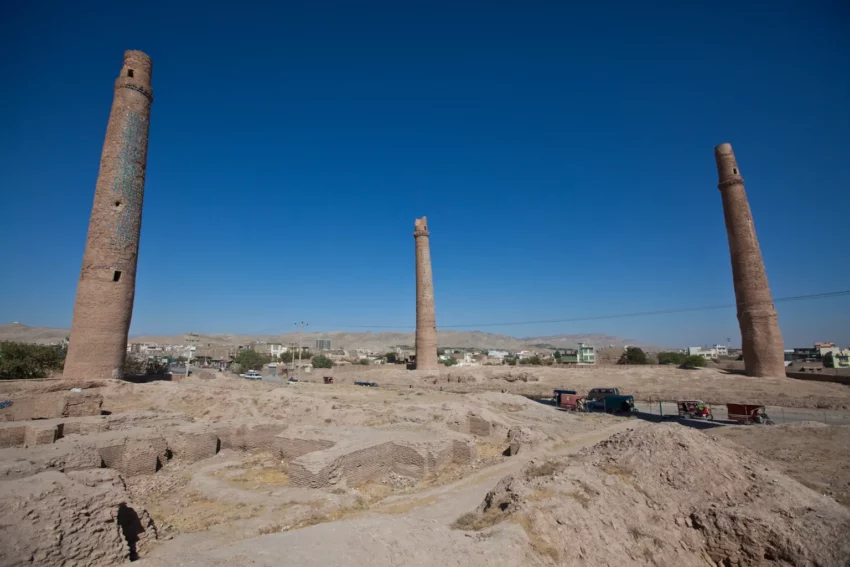The Musalla Complex: A Testament to Timurid Architectural Grandeur
The Musalla Complex, also known as the Musallah Complex or the Musalla of Gawhar Shah, is a significant historical site located in Herat, Afghanistan. This complex, which showcases the splendor of Timurid architecture, has unfortunately fallen into ruins over the centuries. Today, the remnants of this once-magnificent complex include the five Musallah Minarets of Herat, the Mir Ali Sher Navai mausoleum, the Gawhar Shad Mausoleum, and the ruins of a large mosque and a madrasa complex.
Get your dose of History via Email
Historical Overview
The foundation of the Musalla Complex was laid in 1417 AD under the patronage of Queen Gawharshad, the wife of the Timurid ruler Shah Rukh. The construction of various elements of the complex continued throughout the 15th century, culminating with the establishment of a madrasa by Sultan Husayn Bayqara in the late 1400s. The complex suffered significant damage during the Panjdeh incident in 1885, when it was largely demolished by British and Afghan forces to prevent its use as a military cover by Russian troops. This event led to the destruction of most of the complex’s buildings, leaving only the Gawhar Shad mausoleum and nine of the original twenty minarets intact.
Architectural Significance
The Musalla Complex was a masterpiece of Timurid architecture, characterized by its grand scale and the intricate tile work that adorned its structures. The complex originally featured a large mosque and a madrasa, each flanked by towering minarets and decorated with vibrant ceramic tiles. The design elements included large iwans and arcades that surrounded the central courtyard, typical of Persian-Islamic architecture of the time.
Preservation and Conservation Efforts
Throughout the 20th century, various efforts have been made to preserve and restore the remaining structures of the Musalla Complex. Notably, in the 1970s, UNESCO, along with Italian architect Andrea Bruno, initiated conservation projects to stabilize and restore the minarets and the façade decorations. However, the Soviet-Afghan War and subsequent conflicts severely hindered these efforts, leading to further damage to the site.
In recent years, organizations such as the Aga Khan Trust for Culture have been involved in emergency preservation works, including structural reinforcements and restoration of the tile work. Despite these efforts, the complex remains in a precarious state, requiring ongoing attention to prevent further deterioration.
Current State and Future Prospects
As of the latest reports, only five of the original twenty minarets still stand, with the rest having succumbed to natural disasters and neglect. The site continues to attract scholars and tourists alike, drawn by its historical significance and architectural beauty. The potential nomination of Herat as a UNESCO World Heritage Site could bolster efforts to preserve this invaluable part of Afghanistan’s cultural heritage.
Conclusion
The Musalla Complex serves as a poignant reminder of Afghanistan’s rich historical and cultural past. While it stands in ruins today, its remaining structures continue to be a source of national pride and historical interest. The ongoing preservation efforts highlight the global recognition of the importance of safeguarding such sites, not only for Afghanistan but for the heritage of the world at large.

